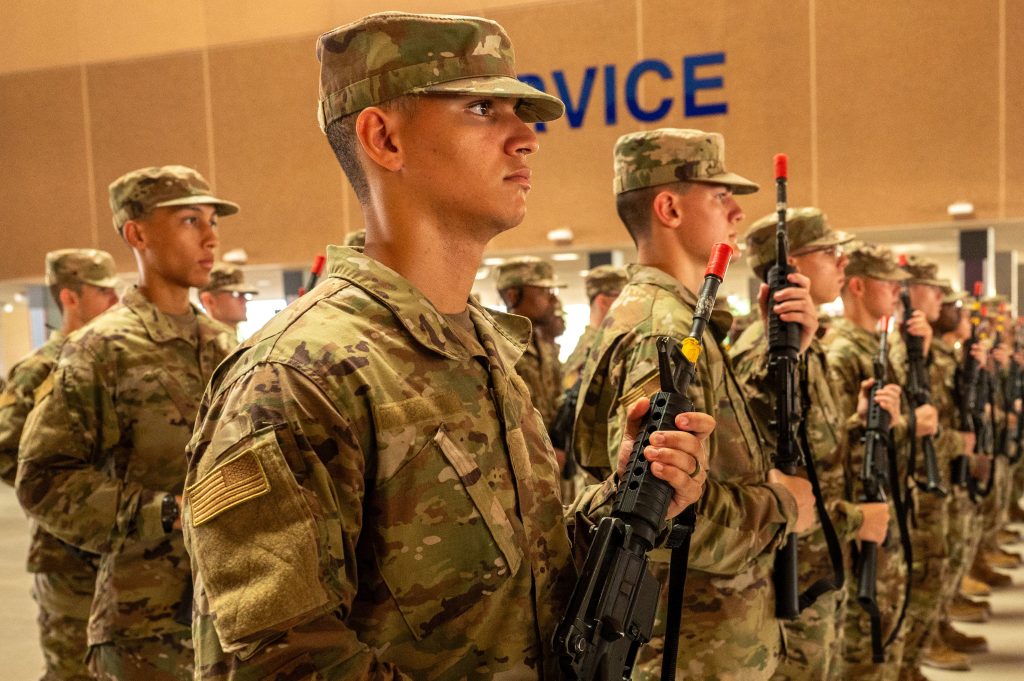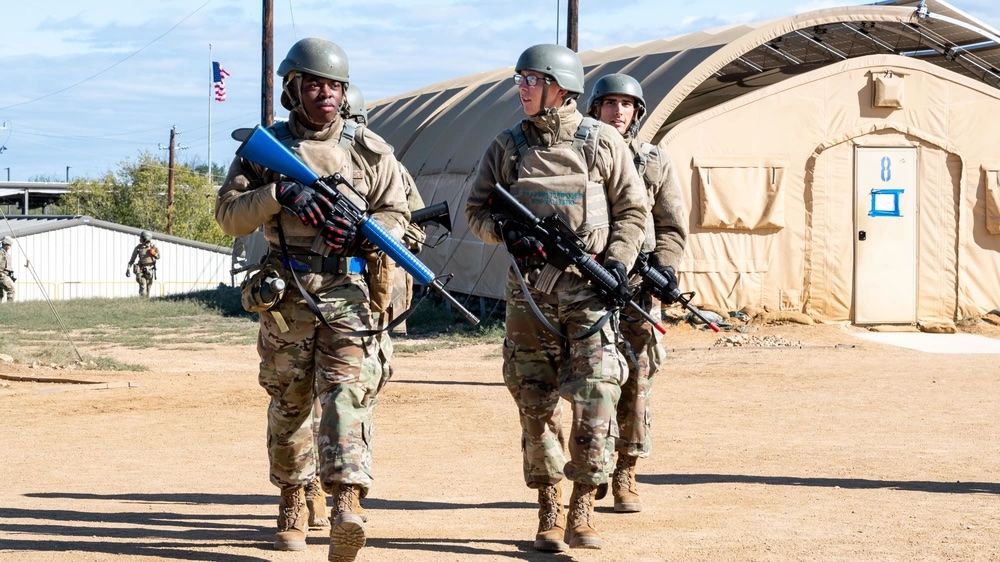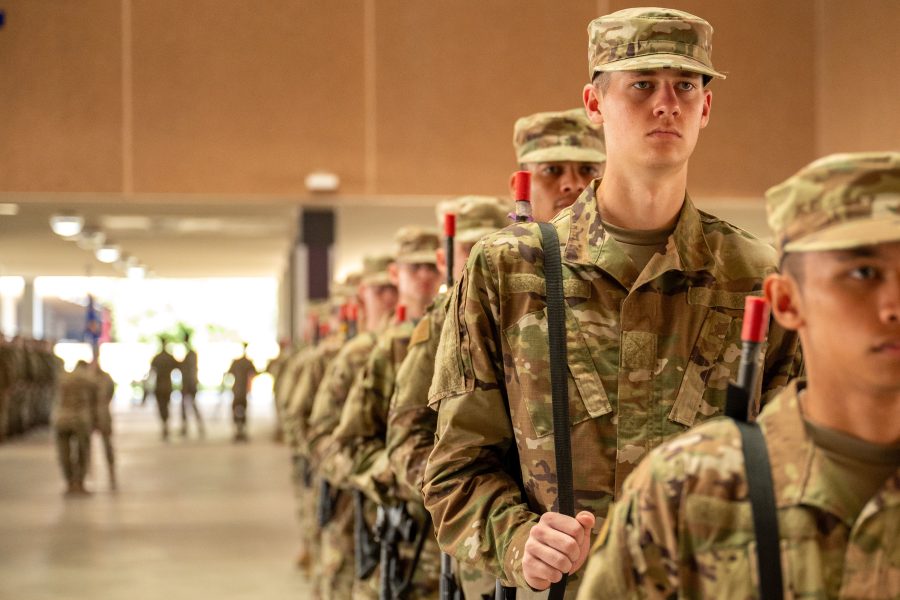NATIONAL HARBOR, Md.—There is no timeline yet on when, if ever, Air Force and Space Force trainees might be expected to carry actual weapons at Basic Military Training, the head of the 37th Training Wing said Sept. 18. The decision to do so would have to be made at higher levels such as the commanders of the Second Air Force, Air Education and Training Command, and even the Chief of Staff of the Air Force.
“It’ll have to go through that entire process to make sure we understand what we’re doing and why we’re doing it, and then just to ensure that we are actually prepared to do that in a safe manner,” Col. Willie L. Cooper told reporters at AFA’s Air, Space & Cyber Conference.
Starting in late July, future Airmen and Guardians were each issued an inert M4 carbine after completing the initial weapons familiarization course during the first week of training. The carbines have a red flash suppressor to show that they are inert, meaning they cannot be fired. Trainees then carry the weapons for the rest of the 7.5-week program and store the rifles in lockers when they’re in the dorms.
But the “desired end state” would be to have Airmen carry actual weapons, ones that are capable of being fired, throughout their BMT experience, Chief Master Sergeant of the Air Force David Flosi told reporters at the conference.
“We really would want to get the real ones, because the threat’s real, the environment is dangerous,” he said.
Trainees used to carry inert weapons until the program halted in 2012. The 737th Training Group, which oversees BMT, brought it back to prepare for possible conflict against China or Russia, which experts say will be more bloody than any the U.S. military has experienced for decades.
“Incorporating practice weapons into realistic scenarios in a controlled environment builds confidence, corrects errors, and manages stress by providing regular practice that reduces hesitation and increases combat effectiveness,” group commander Col. Billy Wilson Jr. said in a press release in August.

In a near-peer conflict, Airmen may have to work in small teams and perform tasks outside their usual career field, such as carrying a rifle and guarding an airfield.
“So understanding lethal means and understanding the responsibility that comes along with it, that’s time well spent,” Flosi said. “It’s a little bit of individual responsibility and accountability, and also its another reminder that you’re in the profession of arms.”
Both Marine and Army recruits carry weapons with them throughout boot camp, during which they learn to fire at the rifle range. Currently, Air Force trainees learn to fire rifles during the fifth week of BMT, then wield training rifles during PACER FORGE, the 36-hour combat exercise at the end of BMT.
“Carrying a weapon … gets that training, the awareness, the confidence, the ability to handle it safely, as they go through the pipeline,” Cooper said.
The colonel said the 37th Training Wing will continue to refine BMT so that it prepares trainees for the end user: the deployable combat wing.
“How do we get our folks, our trainees, acclimated to what they’re going to face at that combat wing, what they’re going to be expected to do,” he said. “That’s where you’ll continue to see tweaks at PACER FORGE and throughout their career.”


